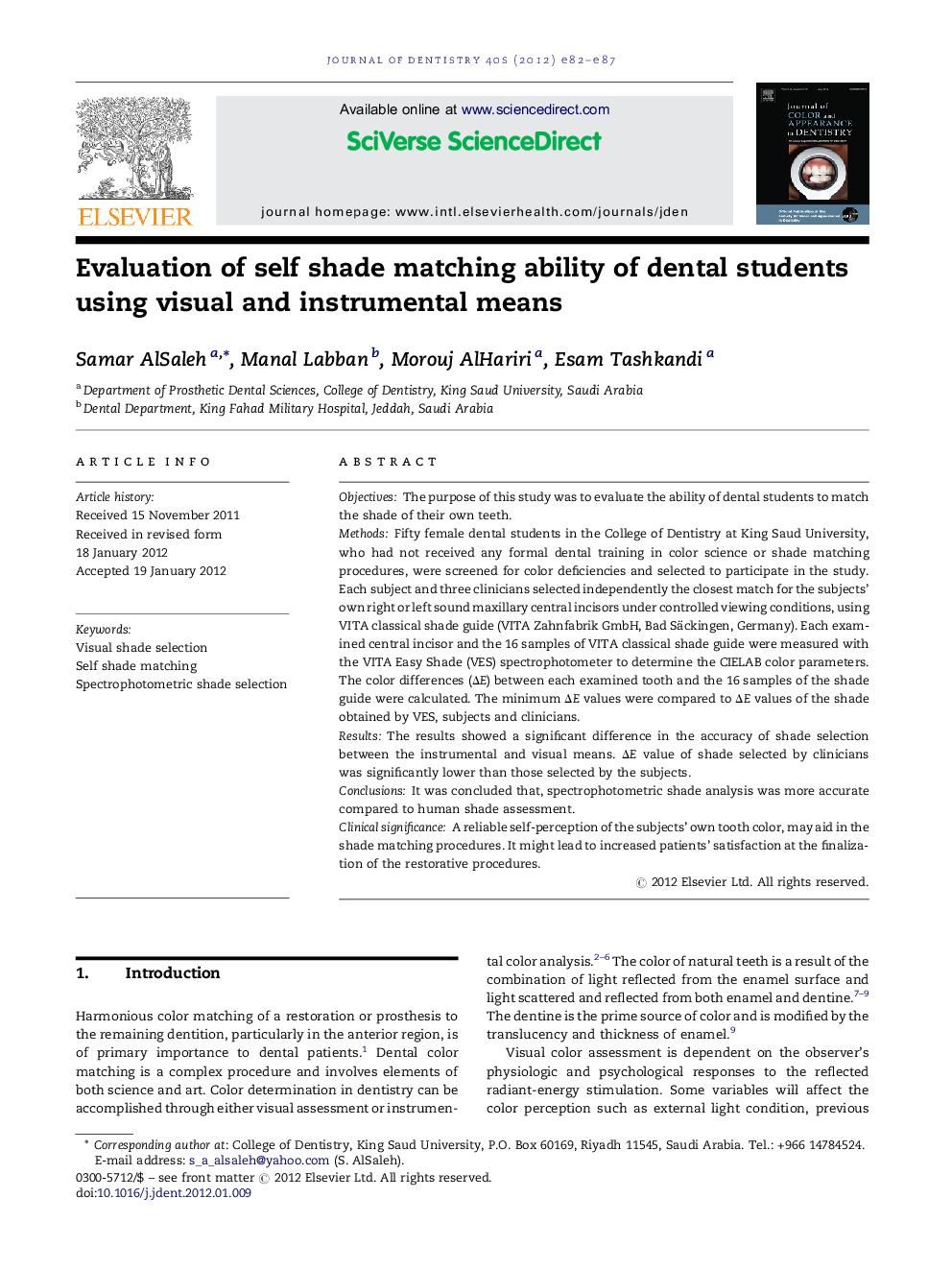| Article ID | Journal | Published Year | Pages | File Type |
|---|---|---|---|---|
| 3145162 | Journal of Dentistry | 2012 | 6 Pages |
ObjectivesThe purpose of this study was to evaluate the ability of dental students to match the shade of their own teeth.MethodsFifty female dental students in the College of Dentistry at King Saud University, who had not received any formal dental training in color science or shade matching procedures, were screened for color deficiencies and selected to participate in the study. Each subject and three clinicians selected independently the closest match for the subjects’ own right or left sound maxillary central incisors under controlled viewing conditions, using VITA classical shade guide (VITA Zahnfabrik GmbH, Bad Säckingen, Germany). Each examined central incisor and the 16 samples of VITA classical shade guide were measured with the VITA Easy Shade (VES) spectrophotometer to determine the CIELAB color parameters. The color differences (ΔE) between each examined tooth and the 16 samples of the shade guide were calculated. The minimum ΔE values were compared to ΔE values of the shade obtained by VES, subjects and clinicians.ResultsThe results showed a significant difference in the accuracy of shade selection between the instrumental and visual means. ΔE value of shade selected by clinicians was significantly lower than those selected by the subjects.ConclusionsIt was concluded that, spectrophotometric shade analysis was more accurate compared to human shade assessment.Clinical significanceA reliable self-perception of the subjects’ own tooth color, may aid in the shade matching procedures. It might lead to increased patients’ satisfaction at the finalization of the restorative procedures.
